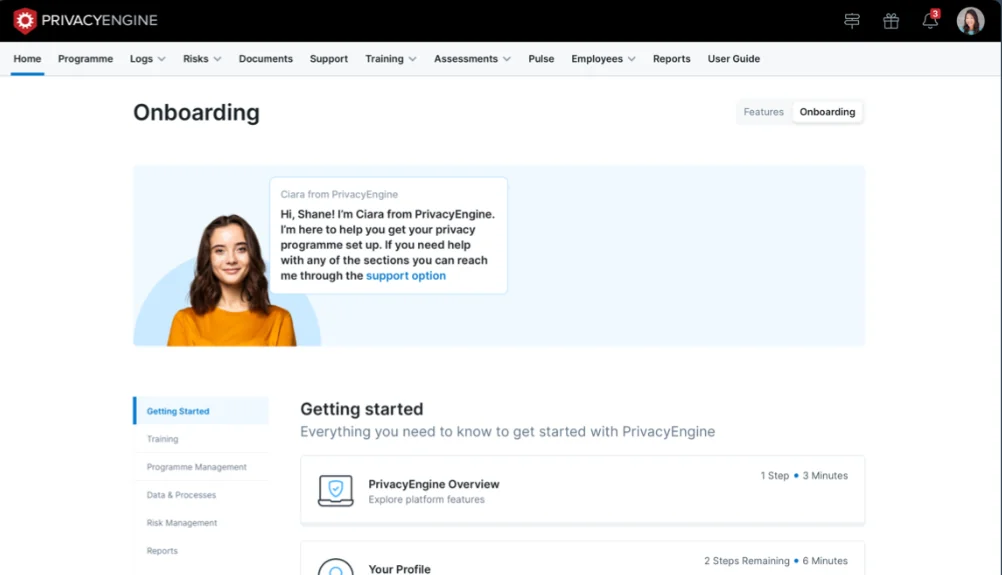The General Data Protection Regulation (GDPR) was introduced by the European Union (EU) to ensure the safeguarding of personal data and provide individuals with more control over their information. One crucial aspect of the GDPR is Article 30, which outlines the requirements for record-keeping of processing activities. In this article, we will delve into the significance of Article 30 and its implications for businesses, as well as clarifying some commonly misunderstood aspects of this regulation.
The Importance of Article 30 in GDPR
Article 30 plays a vital role in data protection as it necessitates businesses to maintain comprehensive records of their processing activities. This requirement enhances transparency and accountability, both of which are fundamental principles of the GDPR. By documenting every aspect of data processing, organizations are able to demonstrate their compliance with the regulation and ensure that individuals’ rights are respected and protected. Furthermore, these records serve as valuable resources for data protection authorities to monitor and enforce GDPR compliance.
The Role of Article 30 in Data Protection
Article 30 acts as a bridge between organizations and data protection authorities by providing a systematic framework for record-keeping. It requires businesses to maintain records of the purposes of processing, categories of personal data, recipients of the data, data retention periods, and any cross-border transfers. These records offer insights into the processing activities carried out by an organization, enabling regulators to assess the lawfulness, fairness, and transparency of such activities.
For instance, let’s consider a hypothetical scenario where a company collects personal data for marketing purposes. By keeping detailed records, the company can demonstrate that it has obtained explicit consent from individuals and that the data is being used solely for the stated marketing purposes. This level of transparency not only builds trust with customers but also ensures that the company is operating within the boundaries defined by the GDPR.
Moreover, Article 30 requires organizations to document any data transfers to third countries or international organizations. This provision is particularly important in today’s globalized world, where data flows across borders regularly. By maintaining records of cross-border transfers, businesses can ensure that appropriate safeguards are in place to protect personal data, even when it leaves the European Economic Area.
Why Article 30 is Crucial for Businesses
For businesses, compliance with Article 30 not only ensures adherence to the GDPR but also fosters trust among their customers and stakeholders. By maintaining detailed records of data processing activities, organizations can effectively respond to data subject access requests, ensuring individuals are informed about how their data is being used. Moreover, these records enable organizations to review and audit their processing activities, identifying areas for improvements and mitigating potential risks.
Furthermore, the records required by Article 30 can serve as a valuable resource for organizations in the event of a data breach. By having a clear overview of their data processing activities, businesses can quickly assess the impact of a breach and take appropriate measures to mitigate the damage. This proactive approach not only helps organizations comply with their obligation to report data breaches promptly but also demonstrates their commitment to protecting individuals’ personal data.
In conclusion, Article 30 of the GDPR plays a crucial role in data protection by requiring organizations to maintain comprehensive records of their processing activities. These records enhance transparency, accountability, and trust, while also enabling regulators to monitor and enforce compliance. By complying with Article 30, businesses can ensure that individuals’ rights are respected and protected, while also mitigating risks and fostering a culture of data protection.
Breaking Down Article 30
Although Article 30 may initially seem complex, understanding its key components is essential for ensuring compliance. Here, we will explore the main elements of Article 30 and delve into how organizations can interpret its language to meet the requirements set forth by the GDPR.
Article 30 of the General Data Protection Regulation (GDPR) is a crucial provision that outlines the obligations of organizations regarding the maintenance of records of their processing activities. By complying with this article, businesses can demonstrate their commitment to data protection and ensure transparency in their data processing practices.
The Key Components of Article 30
Article 30 mandates that organizations maintain records of their processing activities, including the purposes of processing, categories of personal data, recipients of the data, data retention periods, and any cross-border transfers. These records serve as a comprehensive documentation of how personal data is handled within an organization, providing a clear overview of the data processing activities.
By keeping records of the purposes of processing, organizations can demonstrate that personal data is only used for legitimate and lawful reasons. This helps to build trust with individuals whose data is being processed and ensures compliance with the GDPR’s principles of fairness and transparency.
The categories of personal data that organizations must record can vary depending on the nature of their business. This can include sensitive personal data, such as health information or biometric data, as well as more general categories like contact information or financial details. By documenting these categories, organizations can identify potential risks and implement appropriate security measures to protect the data.
Recording the recipients of the data is essential for understanding who has access to personal data within and outside the organization. This information is crucial for ensuring that data is only shared with authorized parties and that appropriate safeguards are in place to protect the data during any cross-border transfers.
Data retention periods must also be documented to ensure compliance with the GDPR’s principles of storage limitation. By clearly defining how long personal data will be retained, organizations can avoid keeping data for longer than necessary and reduce the risk of unauthorized access or misuse.
In addition to the above, organizations must document any security measures in place to protect the data and conduct regular data protection impact assessments. These assessments help organizations identify and mitigate any risks to individuals’ rights and freedoms, ensuring that appropriate measures are in place to safeguard personal data.
By diligently recording these details, businesses can demonstrate their commitment to data protection and comply with the obligations outlined in the GDPR. These records also serve as a valuable resource for data protection authorities during audits or investigations, allowing them to assess an organization’s compliance with the GDPR.
Interpreting the Language of Article 30
While the language used in the GDPR can be intricate, it is crucial for organizations to decipher the requirements outlined in Article 30 accurately. One helpful approach is to break down the regulation into manageable steps, ensuring that each requirement is carefully addressed.
Organizations can start by identifying the specific processing activities they undertake and categorizing them accordingly. This can involve mapping out the data flows within the organization and determining the purposes for which personal data is processed.
Once the processing activities are identified, organizations can document the categories of personal data involved in each activity. This can be done by creating a comprehensive inventory that includes all relevant data elements and their corresponding categories.
Next, organizations should document the recipients of the data, both within and outside the organization. This can include employees, contractors, third-party service providers, or any other party with access to personal data. By clearly identifying the recipients, organizations can ensure that data is only shared with authorized individuals or entities.
Data retention periods should be determined based on the purpose for which personal data is processed. Organizations must assess the appropriate retention periods for different categories of data, taking into account legal requirements, business needs, and individual rights.
Furthermore, organizations must document the security measures in place to protect the data. This can include technical and organizational measures such as encryption, access controls, staff training, and regular security audits. By documenting these measures, organizations can demonstrate their commitment to data security and compliance with the GDPR’s requirements.
Interpreting the language of Article 30 can be challenging, especially for organizations without legal expertise. Seeking guidance from legal experts and collaborating with data protection officers can assist in clarifying any uncertainties and enhancing compliance efforts. These professionals can provide valuable insights and ensure that organizations interpret the requirements accurately.
In conclusion, Article 30 of the GDPR plays a crucial role in ensuring transparency and accountability in data processing activities. By diligently maintaining records and interpreting the language of this article correctly, organizations can demonstrate their commitment to data protection and comply with the obligations set forth by the GDPR.
Compliance with Article 30
Complying with Article 30 of the regulation requires a proactive and systematic approach. By following a set of steps and maintaining accurate records, businesses can ensure they meet the requirements of this regulation and minimize the risk of non-compliance. Let’s explore some essential steps organizations can take to ensure compliance with Article 30.
Steps to Ensure Compliance with Article 30
- Evaluate your data processing activities: Begin by conducting a comprehensive assessment of all the processing activities within your organization. This evaluation should include an analysis of the purposes of each activity and the corresponding categories of personal data involved. Understanding the scope of your data processing activities is crucial for effective compliance.
- Create a record-keeping system: Developing a robust record-keeping system is crucial to comply with Article 30. This system should document all relevant information, such as the legal basis for processing, data retention periods, and details of any cross-border transfers. It is important to ensure that the record-keeping system is easily accessible and regularly updated to reflect any changes in data processing activities.
- Establish security measures: Implementing appropriate technical and organizational measures to protect personal data from unauthorized access, loss, or alteration is a fundamental aspect of compliance with Article 30. These security measures can include encryption, access controls, and regular data backups. It is essential to document these measures within the record-keeping system to demonstrate your commitment to data protection.
- Perform regular audits and reviews: Regularly reviewing your record-keeping system and processing activities is essential to ensure they remain accurate and up-to-date. Conducting data protection impact assessments when necessary can help identify potential risks and vulnerabilities in your data processing activities. By addressing these risks proactively, you can minimize the likelihood of non-compliance.
- Train employees: Providing adequate training and awareness programs for employees involved in data processing activities is crucial for compliance with Article 30. Ensuring that employees understand the importance of complying with Article 30 will help maintain accurate records and promote data protection best practices. Training should cover topics such as data minimization, consent management, and handling data subject requests.
- Monitor and adapt: Compliance with Article 30 is an ongoing process. It is important to continuously monitor changes in data processing activities, regulations, and best practices. Regularly reviewing and updating your record-keeping system and security measures will help ensure ongoing compliance with Article 30.
Potential Consequences of Non-Compliance
Non-compliance with Article 30 can result in severe consequences for organizations. Data protection authorities have the power to impose significant fines, which can amount to millions of euros. Additionally, non-compliance can significantly damage an organization’s reputation and erode customer trust. The negative impact of non-compliance can extend beyond financial penalties, affecting an organization’s ability to conduct business and collaborate with partners. Therefore, it is crucial for businesses to prioritize compliance efforts and diligently maintain records in accordance with Article 30.
Furthermore, non-compliance can lead to legal disputes and potential lawsuits from individuals whose personal data has been mishandled. These legal battles can be time-consuming, costly, and detrimental to the overall operations of an organization. It is essential for businesses to understand the potential consequences of non-compliance and take proactive measures to ensure adherence to Article 30.
In conclusion, compliance with Article 30 requires a comprehensive and proactive approach. By following the steps outlined above and maintaining accurate records, organizations can demonstrate their commitment to data protection and minimize the risk of non-compliance. Prioritizing compliance efforts not only helps avoid potential fines and legal consequences but also builds trust with customers and stakeholders, fostering a positive reputation in the market.
Article 30 and Non-EU Countries
Article 30 of the General Data Protection Regulation (GDPR) plays a significant role in regulating the processing of personal data of EU residents by businesses operating outside the European Union. It establishes obligations that these organizations must adhere to when handling the personal data of individuals residing in the EU.
The implications of Article 30 for international businesses are far-reaching. It is essential for these organizations to familiarize themselves with the GDPR and gain a comprehensive understanding of the obligations stipulated in Article 30. By adopting a global approach to data protection, organizations can demonstrate their commitment to privacy and comply with the requirements of different data protection regimes worldwide.
Compliance with Article 30 not only ensures legal adherence but also strengthens customer trust and confidence in the handling of their personal information. International businesses that prioritize data protection and privacy rights are more likely to attract and retain customers who value their personal information security.
Implications for International Businesses
International businesses face unique challenges when it comes to complying with Article 30. They must navigate the complexities of different legal frameworks and ensure that their data processing activities align with the GDPR requirements. Adopting a proactive approach to data protection is crucial for these organizations to avoid penalties and maintain a positive reputation.
One way international businesses can demonstrate compliance is by appointing a Data Protection Officer (DPO) who can oversee and monitor data processing activities. The DPO can ensure that the organization has implemented appropriate technical and organizational measures to protect personal data and maintain records of processing activities as required by Article 30.
Furthermore, international businesses must establish clear policies and procedures for handling personal data, including obtaining valid consent, implementing data retention periods, and responding to data subject rights requests. By having robust processes in place, these organizations can effectively manage the personal data of EU residents and demonstrate their commitment to privacy.
Understanding Cross-Border Data Transfers
Article 30 places significant emphasis on documenting cross-border transfers of personal data. For international businesses, this means assessing the adequacy of data protection in destination countries and implementing necessary safeguards to ensure the continued protection of data subjects’ rights and freedoms.
When transferring personal data to a non-EU country, organizations must evaluate whether the destination country provides an adequate level of protection. If the country does not meet the GDPR’s adequacy requirements, businesses must implement additional safeguards, such as standard contractual clauses or binding corporate rules.
Documenting and justifying these cross-border transfers is crucial for international businesses to demonstrate compliance with Article 30. By keeping detailed records of the transfers and the safeguards implemented, organizations can mitigate potential risks and show their commitment to protecting personal data.
Furthermore, international businesses should regularly review and update their data transfer mechanisms to ensure ongoing compliance with the GDPR. As data protection laws evolve, organizations must stay informed and adapt their practices accordingly to maintain the trust of their customers and business partners.
Frequently Asked Questions about Article 30
Despite its significance, Article 30 can be subject to confusion and misconceptions. Here, we address some commonly asked questions to provide clarity and a better understanding of this regulation.
Article 30 of the General Data Protection Regulation (GDPR) is a crucial provision that outlines the requirement for organizations to maintain records of their processing activities. These records serve as a means to demonstrate compliance with the GDPR and ensure the protection of individuals’ personal data.
Addressing Common Misconceptions
One common misconception is that Article 30 only applies to large organizations. In reality, Article 30 applies to all organizations that process personal data, regardless of their size. This means that even small businesses, startups, and non-profit organizations must comply with the record-keeping obligations set forth in Article 30.
By requiring organizations of all sizes to maintain records, the GDPR aims to ensure that the protection of personal data is not limited to a select few. It recognizes the importance of data protection for individuals and the need for accountability across the board.
Clarifying Complex Aspects of Article 30
Another complex aspect of Article 30 is determining the appropriate level of detail required for maintaining records. While there is no one-size-fits-all approach, organizations should strive to provide sufficient information to demonstrate compliance while avoiding unnecessary complexity.
The level of detail required may vary depending on the nature and scale of an organization’s processing activities. For example, a large multinational corporation that processes a vast amount of personal data may need to provide more extensive records compared to a small local business with minimal data processing activities.
Legal guidance and best practices can assist organizations in striking the right balance when it comes to record-keeping. Consulting with privacy professionals or seeking advice from data protection authorities can provide valuable insights into the expectations and requirements for maintaining records under Article 30.
Additionally, organizations can benefit from implementing data protection management systems or software solutions that facilitate the recording and management of processing activities. These tools can streamline the process, ensuring that the necessary information is captured accurately and efficiently.
It is important to note that maintaining records under Article 30 is not a one-time task but an ongoing obligation. Organizations must regularly review and update their records to reflect any changes in their processing activities or data protection practices.
By taking a proactive approach to record-keeping, organizations can not only comply with the requirements of Article 30 but also enhance their overall data protection practices. Maintaining comprehensive and up-to-date records demonstrates a commitment to transparency, accountability, and the protection of individuals’ personal data.
Future of Article 30 and GDPR
The world of data protection continues to evolve, and it is essential for organizations to stay informed about potential changes to the GDPR and its associated regulations. Here, we explore the potential future developments regarding Article 30 and data protection.
Predicted Changes in Data Protection Laws
As technology advances and new data protection challenges arise, it is likely that amendments and updates will be made to the GDPR and its regulations. Organizations should anticipate these changes and adapt their record-keeping practices accordingly to ensure ongoing compliance and data protection best practices.
Preparing for Future Updates to Article 30
To prepare for future updates to Article 30 and other GDPR regulations, organizations should adopt a proactive approach to data protection. This includes staying informed about industry developments, engaging in ongoing training and education, and regularly reviewing and updating record-keeping practices to align with evolving data protection requirements.
In conclusion, understanding Article 30 of the GDPR is vital for organizations aiming to comply with data protection regulations and safeguard individuals’ personal data. By recognizing the significance of Article 30, following the steps for compliance, and staying informed about potential future developments, businesses can navigate the complex landscape of data protection and ensure they meet their obligations under the GDPR.




